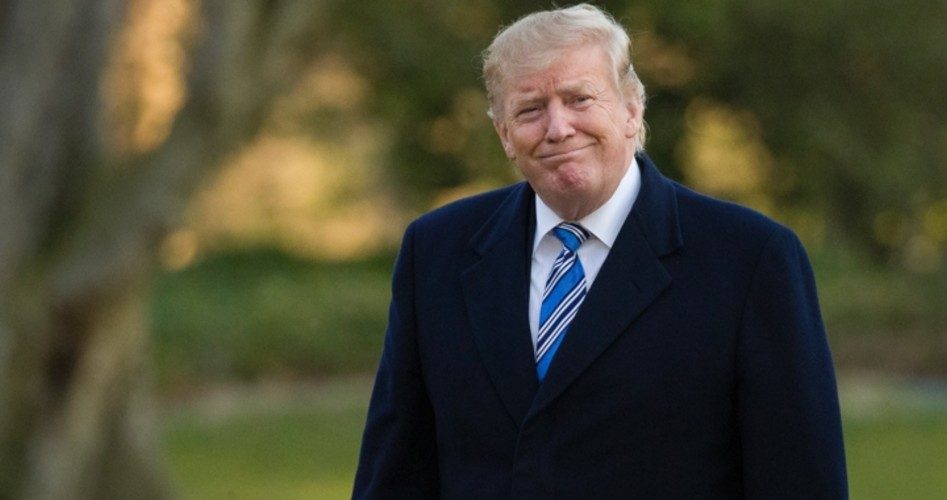
In his preliminary budget proposal for Congress released on Monday, President Trump touted his accomplishments during his first two years in office — five million new jobs, five million off food stamps, lowest unemployment in 50 years, etc. — and then expressed, with breathtaking hubris, his plan: “[It] provides a clear roadmap for the Congress to bring Federal spending and debt under control. We must protect future generations from Washington’s habitual deficit spending.”
This was addressed to precisely those habitual spenders who are increasingly ignoring not only budgetary constraints but practical real-world concerns about massive deficits and a growing national debt.
Russell Vought, the acting director of the Office of Management and Budget (OMB), touted the plan as “a clear road map for a more fiscally responsible future, if Congress chooses to follow it.”
Democrats have already chosen not to. House Speaker Pelosi reminded the president that “Congress refused to fund his wall and he was forced to admit defeat and reopen the government. The same thing will repeat itself if he tries this again.” Senate Minority Leader Chuck Schumer (D-N.Y.) said the $8.6 billion Trump is requesting to finish building his wall “would be better spent on rebuilding America.” The chairman of the House Budget Committee, Representative John Yarmuth (D-Ky.), said that Trump’s call for cuts to various welfare programs in order to pay for increases in defense spending “dangerous” while reminding his followers that, under the Trump administration, the national debt has ballooned from $20 trillion to $22 trillion. They were the result, said Yarmuth, of Trump’s “tax cuts for the wealthy and large corporations, and now it appears his budget asks the American people to pay the price.”
The $4.7 trillion budget forecasts that $1 trillion deficits will continue into the near future, but then gradually shrink to zero by 2034. In order to make the math work, the plan assumes the economy grows at 3.1 percent a year, that interest rates will remain low, and that there is no recession along the way.
Trump’s first budget proposed in 2017 projected that the deficit would total $488 billion in 2020, and that deficits would disappear altogether by 2028. Trump’s budget now projects that the 2020 deficit will exceed $1.1 trillion, and that deficits wouldn’t disappear until 2034. The problem is simple: Trump’s budget released on Monday projects $2 trillion less in tax revenues over the next 10 years than originally forecast, while the federal government is expected to spend $1.9 trillion more.
What lit up the Democrats was the president’s audacity regarding building his wall. He requested $8.6 billion from the same Democrat-controlled House that just rejected his demand for $5.6 billion. It also included increased spending for ICE (Immigration and Customs Enforcement), an agency that some Democrats want to abolish. Finally, it included policy changes that would end sanctuary cities.
What Trump’s preliminary proposal didn’t address was the elephant in the living room: the three-headed elephant of Social Security, Medicare, and Medicaid. At least one of these programs will run out of money in the next 10 years and yet this was not addressed, at least in the proposal released Monday. As Justin Bogie, writing in the Daily Signal, noted, “Without fundamentally reforming Social Security, Medicare and Medicaid, it will be impossible to achieve a sustainable budget over the long term.”
President Trump’s opening bid will be expanded in more detail next week when the complete proposal will be made public. It’s likely to confirm what’s already obvious: This is show business; all show and no go.
Photo: AP Images
An Ivy League graduate and former investment advisor, Bob is a regular contributor to The New American, writing primarily on economics and politics. He can be reached at [email protected].


